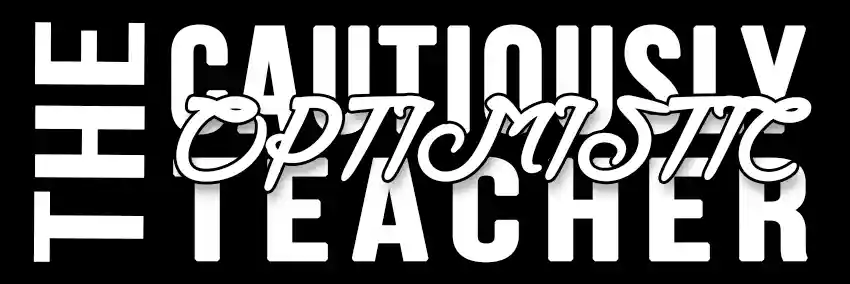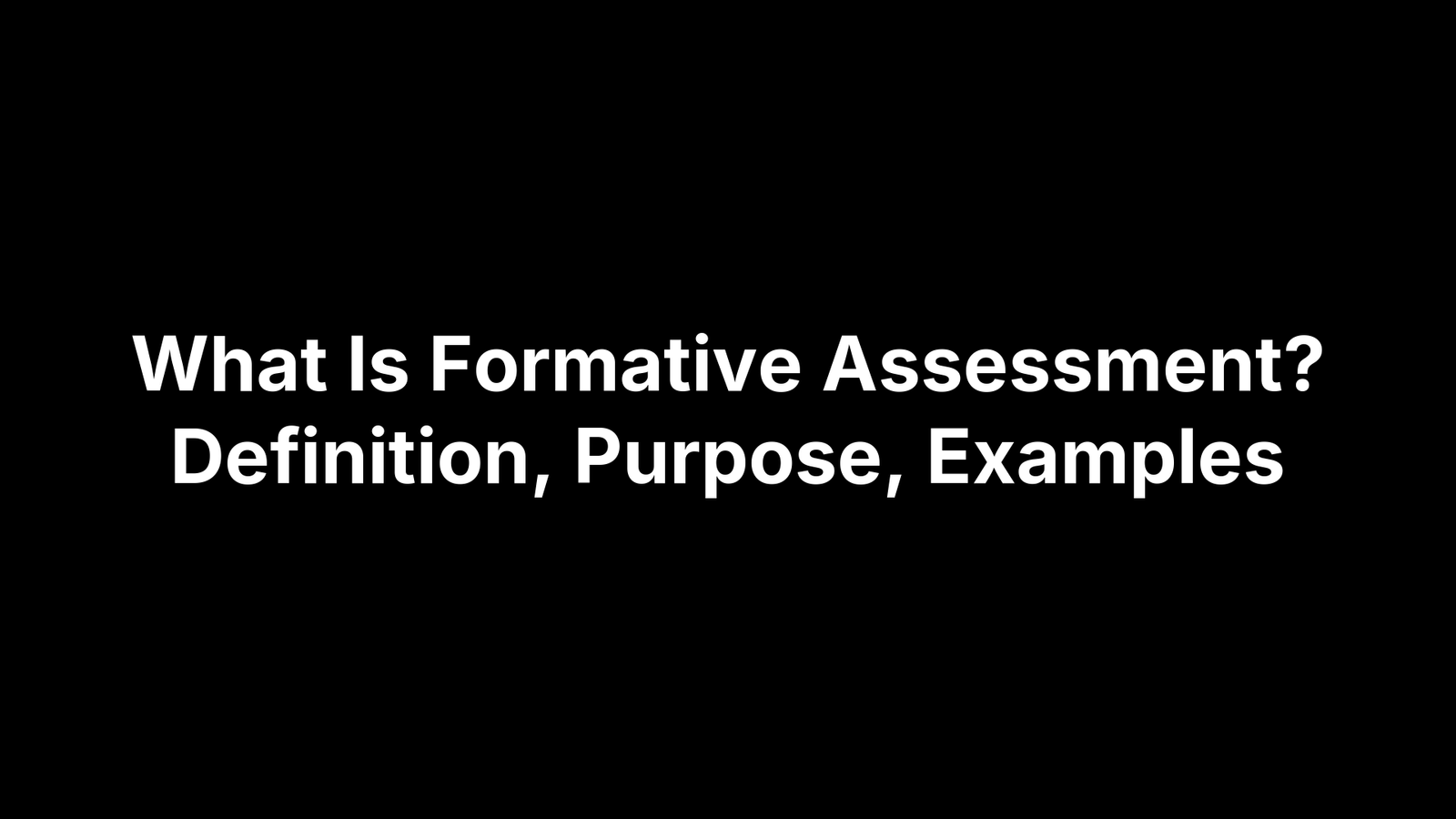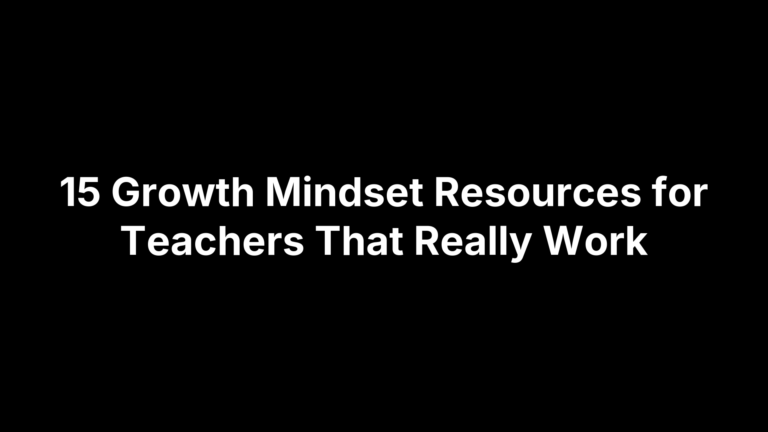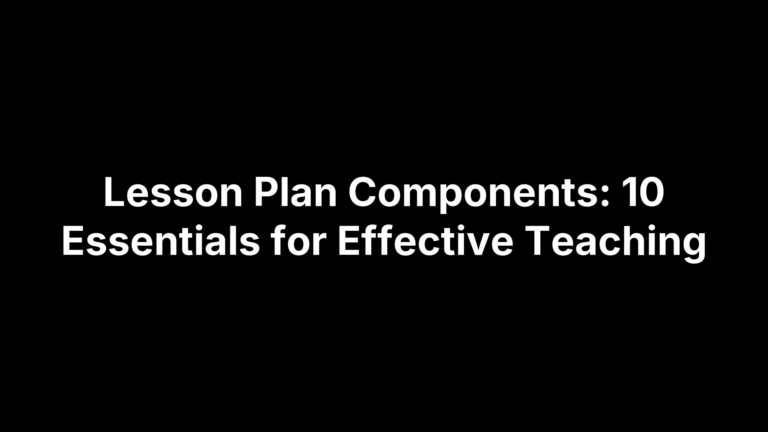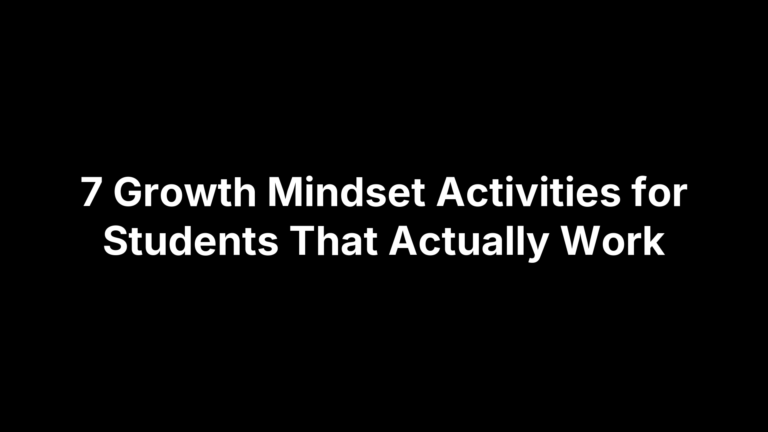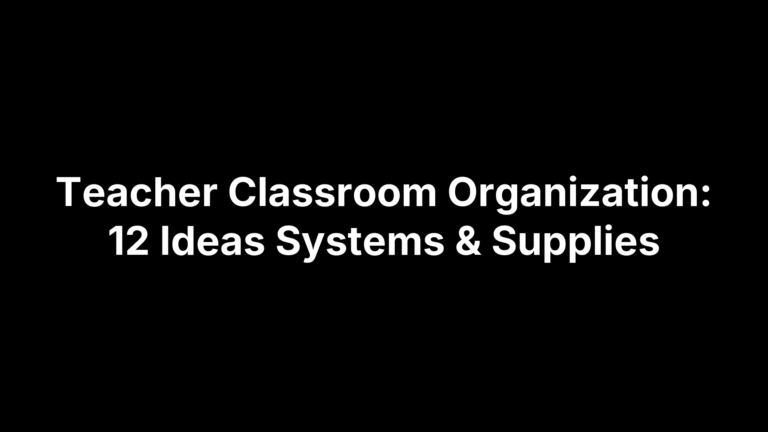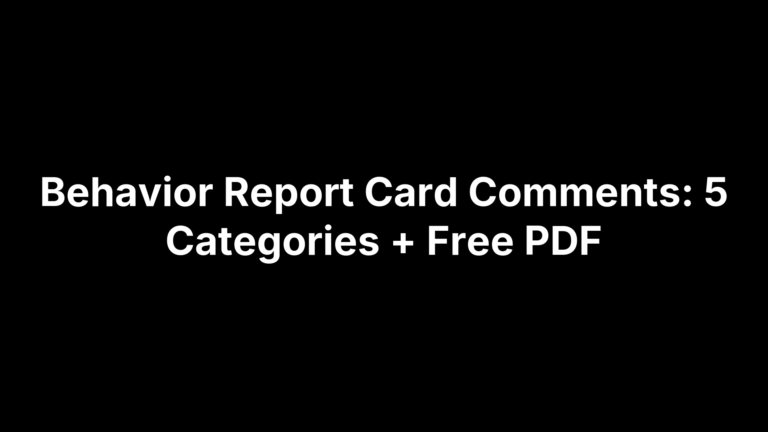Everything You Need to Know About What is Formative Assessment
What is formative assessment? In short, it is an ongoing process teachers use during instruction to gather evidence of learning and immediately adapt teaching to meet student needs. Unlike end-of-unit exams, these check-ins are low stakes, feedback-oriented, and designed to shine a light on misunderstandings while there’s still time to fix them—saving both students and teachers from last-minute surprises.
Whether you’re a new teacher planning your first unit or a veteran looking to sharpen your toolkit, this guide lays out everything you need: a plain-language definition, a side-by-side comparison with summative tests, the educational payoff for students and teachers, 20 ready-to-use classroom ideas, and a simple four-step cycle for turning data into daily instructional moves. By the end, you’ll be ready to weave quick, purposeful assessments into any lesson without adding a single extra worksheet.
Defining Formative Assessment in Plain Language
Formative assessment is a quick, purposeful check of student understanding while a lesson is still unfolding so both teacher and learners can tweak their next steps on the spot. Coined by Michael Scriven and later popularized by Black & Wiliam, it’s often labeled “assessment for learning,” “ongoing assessment,” or simply “feedback loops.”
Core Features to Highlight
- Ongoing, iterative snapshots
- Evidence-based observations or tasks
- Immediate feedback used by all
- Low-stakes or ungraded
Why It’s Not the Same as “Checking Homework”
Marking last night’s worksheet is routine record-keeping; a formative check is intentionally mapped to today’s learning goal and embedded during guided practice, giving you actionable intel long before the unit test rolls around.
Formative vs Summative Assessment: Key Differences Teachers Must Know
Think of formative and summative assessments as snapshots versus yearbook photos. Both capture learning, but the first guides the next shot while the latter closes the album. In practice, they diverge on four essentials:
- Purpose: improve learning now vs. certify learning later
- Timing: during instruction vs. end of unit/term
- Stakes: low or no grade vs. high grade or accountability score
- Data Use: adjust teaching & studying vs. record performance
| Feature | Formative | Summative |
|---|---|---|
| Primary goal | Guide immediate instruction | Judge final mastery |
| When given | Ongoing—daily/weekly | Culmination of unit, semester |
| Grading weight | Minimal or none | Significant |
| Feedback speed | Same class period | Days – weeks after |
| Typical audience | Teacher & students | Administrators, parents, reports |
Purpose and Timing
Formative checks happen in real time to steer learning—much like a GPS recalculating your route. Summative tasks land after the journey to confirm you reached the destination.
Stakes and Grading Practices
Because formative work is diagnostic, it’s usually ungraded or counts only for participation, freeing students to take risks. Summatives carry heavier weights: report-card marks, GPA points, even state accountability ratings.
Typical Examples of Each
- Formative: exit tickets, thumbs-up/thumbs-down, one-minute papers
- Summative: chapter tests, final projects, standardized exams
Educational Purpose and Benefits of Formative Assessment
Formative assessment isn’t busywork; it’s the engine that keeps daily learning running smoothly. By turning student thinking into visible evidence, it fuels prompt decisions that raise achievement without adding more tests.
How Students Benefit
Students receive fast, concrete feedback that
- exposes specific learning gaps,
- celebrates incremental wins to boost motivation, and
- provides time to tweak strategies before high-stakes grades are recorded.
How Teachers Benefit
Teachers gather bite-size data that
- signals when to reteach, enrich, or differentiate,
- informs flexible grouping and targeted intervention, and
- prevents end-of-unit surprises that derail pacing.
Alignment With Standards and Objectives
Because every check is tied to a clear learning target, results map directly to standards. Example: an 8th-grade ELA exit ticket asking for a claim and two text details instantly gauges CCSS W.8.1 mastery and informs the next mini-lesson.
Fundamental Principles of Effective Formative Assessment
Quick checks only work when they rest on solid ground. Treat the four principles below as your pre-flight list—skip one and the data you collect loses power.
Clear Learning Targets and Success Criteria
Post the learning intention in student-friendly language and show what success looks like. A micro-rubric helps:
Level 3 ✔ claim ✔ two text details ✔ explanation linked to claim
When expectations are crystal clear, evidence is easier to spot.
Student Involvement and Agency
Make learners co-pilots. Peer reviews, self-ratings (green = got it; yellow = almost; red = help!) and goal-setting logs turn assessment into a shared responsibility.
Actionable Feedback Loops
Feedback should arrive while memory is fresh—ideally the same class period—and describe next steps (“add evidence”) rather than judge (“B- minus”). That immediacy sparks productive revisions.
Continuous, Low-Stakes Checks
Small, ungraded pulses every 10–15 minutes (fist-to-five, quick polls) surface misconceptions early without tanking morale or gradebooks, keeping lessons nimble and responsive.
Types and Methods of Formative Assessment
No single technique fits every moment, so smart teachers stock a varied toolkit. The options below move from quick gut checks to structured tasks and tech-powered dashboards—pick what aligns with today’s objective, class time, and student needs.
Informal, On-the-Fly Techniques
- Thumbs up/down or fist-to-five pulse checks
- Popsicle-stick cold calling
- Think-pair-share debriefs
Ideal for opening hooks or mid-lesson pivots when you need a 30-second read.
Formal Classroom Tools
- Two-question Google Form quizzes
- Exit tickets collected at the door
- One-paragraph “quick writes” on lined paper
Results give concrete data you can sort during the passing period.
Peer and Self-Assessment Strategies
- Two-stars-and-a-wish feedback swaps
- Checklist against posted success criteria
- Colored-pen self-revision rounds
These routines build metacognition while reducing your marking load.
Performance and Project-Based Checks
- Math whiteboard rallies
- Science lab demonstrations with observation sheets
- Rough-draft critiques in writer’s workshop
Great for gauging higher-order skills in authentic contexts.
Technology-Enhanced Options
- Live polls with Nearpod or Pear Deck
- Auto-graded Socrative or Kahoot quizzes
- Real-time dashboards from learning-management systems
Remember: the gadget should amplify, not replace, sound instructional intent.
20 Ready-to-Use Classroom Examples (Across Grades & Subjects)
Need inspiration fast? Bookmark the ideas below. Each one slips naturally into a lesson, yields instant evidence, and requires almost no extra prep—perfect for the bell-to-bell hustle.
Quick Checks for Understanding
Small, speedy pulses to spot misconceptions.
- Exit ticket asking, “Name the main theme and one quote.”
- One-minute paper summarizing today’s key formula in math.
- Fist-to-five rating of confidence before practice problems.
- 3-2-1 reflection: three facts, two questions, one takeaway.
Discussion-Based Techniques
Talk it out to reveal thinking.
5. Socratic seminar “fishbowl” with rotating inner circle.
6. Wingman questioning—student asks peer for evidence.
7. Chat stations posting prompts on chart paper corners.
8. Turn-and-talk followed by random cold call share-outs.
Visual and Graphic Assessments
Pictures worth a thousand data points.
9. Concept map connecting causes of the Civil War.
10. Venn diagram comparing plant and animal cells.
11. Sketch-to-stretch drawing of poem imagery.
12. Storyboard panels outlining a lab procedure.
Writing and Reflection Methods
Short bursts that make thinking visible.
13. Learning-log entry identifying today’s success criteria progress.
14. Summary frame filling blanks about plot structure.
15. Letter to future self predicting exam score and plan.
16. Colored-pen self-revision marking evidence and reasoning.
Performance Tasks and Demonstrations
Show, don’t tell mastery.
17. Math number talk explaining two solution pathways aloud.
18. Science bell-ringer lab measuring reaction rate with stopwatch.
19. Historical role-play debate on the New Deal.
20. Foreign-language oral retell of weekend activities in past tense.
Implementing a Formative Assessment Cycle in Your Classroom
Think of formative assessment as a tight feedback loop rather than a stack of quizzes. The four-step cycle — Plan → Elicit → Interpret → Act — keeps everyone moving and makes every check worth the time.
Planning With the End in Mind
Begin with the standard, draft the formative check, then slot activities around it. A mini-template:
- Learning target
- Success criteria
- Evidence tool (exit ticket, quick poll)
- Anticipated pivots (reteach, extend)
Gathering and Interpreting Evidence Efficiently
During the lesson, log data on a single sheet: names down the side, objectives across the top. Use ✔, △, ✘ or traffic-light colors for instant visual patterns. Digital dashboards (Google Forms, Pear Deck) auto-summarize totals to save minutes.
Acting on Evidence: Instructional Responses
Translate patterns into moves the same period:
- Red column? Five-minute reteach at the doc cam
- Mostly green? Offer an enrichment choice board
- Mixed? Form flexible groups for station work
Keep a simple decision tree taped to your laptop for quick calls.
Involving Students in the Cycle
Close class with a 5-minute reflection: students rate their work, set a “next step,” and staple the slip to their notebook. Weekly, hold two-minute conferences to compare goals versus evidence—turning feedback into feed-forward.
Overcoming Common Challenges and Misconceptions
Formative assessment brings familiar snags. Clear the four biggest hurdles with these quick fixes.
“I Don’t Have Time” – Streamlining Strategies
Embed micro-checks into what you already do: a thumbs-up before group work, a one-question exit slip while students pack up. Tech tools can auto-collect and chart results.
“Students Don’t Take It Seriously”
Frame each check as a chance to improve, not a grade. Publicly showcase how yesterday’s data shaped today’s lesson so effort feels meaningful.
Grading Dilemmas
Clarify at launch that most formative work is practice: complete/incomplete or feedback only. Save percentage points for summatives to avoid grade-inflation fatigue.
Data Overload
Track patterns, not perfection. A simple traffic-light spreadsheet or sticky-note grid reveals who needs reteach without drowning you in individual tallies.
Quick FAQ About Formative Assessment
1. What is the meaning of formative assessment?
It’s an in-lesson process for collecting evidence of learning and using it right away to improve teaching and studying.
2. What is one example of a formative assessment?
An exit ticket that asks students to write one key takeaway and one lingering question before they leave class.
3. How often should teachers use formative assessments?
Small checks every day—or at least a few times per week—keep misconceptions from snowballing.
4. Can formative assessments be graded?
They can be, but most teachers keep them low stakes or ungraded so students feel safe to take risks.
5. Are quizzes formative or summative?
A quiz is formative when its results guide next steps during the unit, and summative when it simply records a final score.
Keep the Learning Cycle Moving
Formative assessment is simply good teaching in action: define a clear goal, gather quick evidence, interpret it with students, and pivot before misconceptions harden. When those four moves become routine, you’ll see tighter instruction, higher engagement, and fewer end-of-unit surprises. The tools can be as simple as a thumbs-up or as fancy as a real-time dashboard, but the purpose never changes—use today’s data to make tomorrow better.
Ready to put these ideas on autopilot? Download our free exit-ticket templates or try the AI Worksheet Maker and Differentiated Instruction Helper waiting over on The Cautiously Optimistic Teacher. Keep the feedback flowing, and watch learning accelerate.
